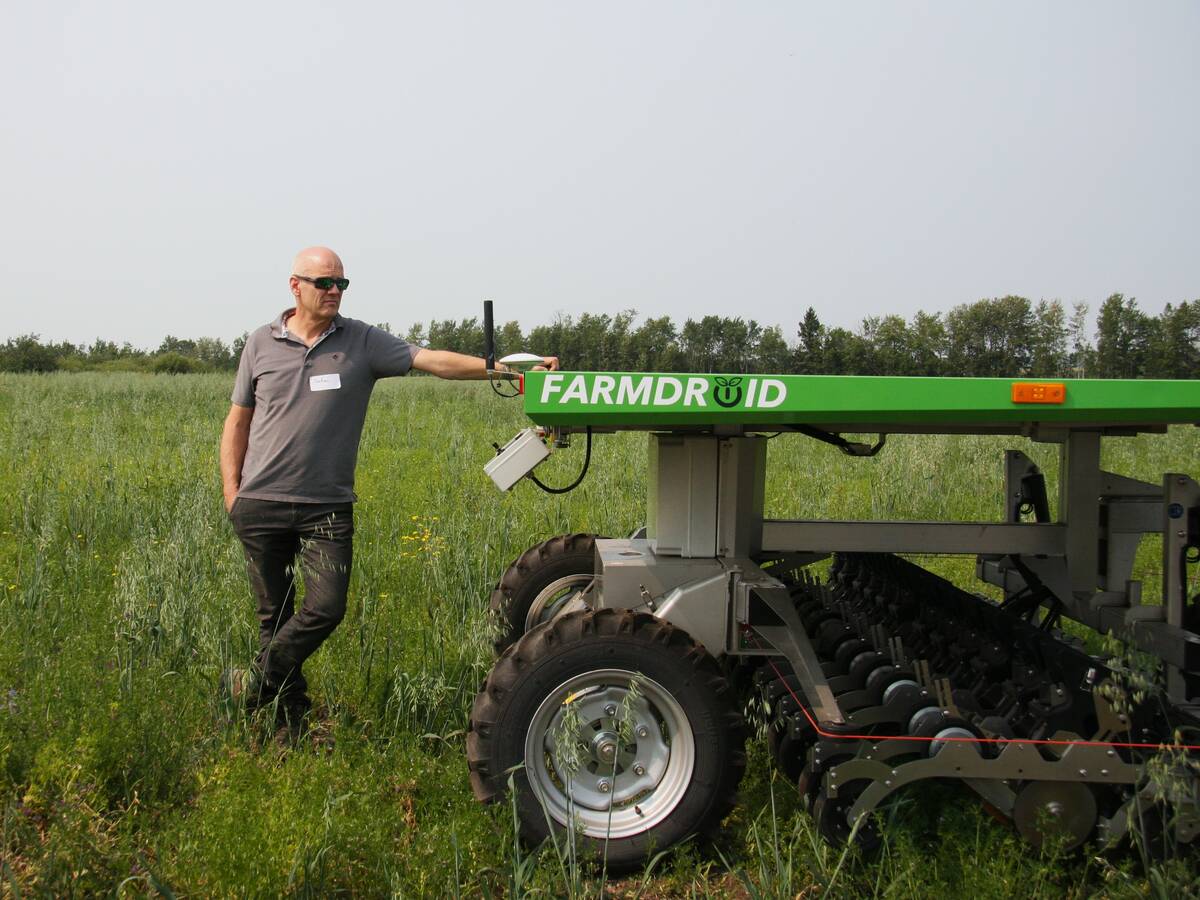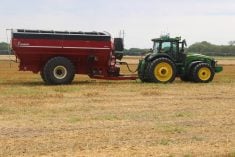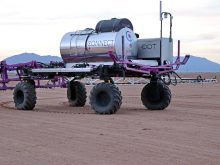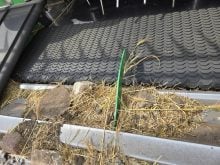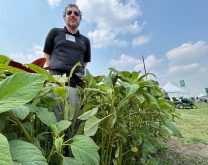Glacier FarmMedia – For organic, horticulture and small-scale farmers, a new toy is available and making waves.
Stefan Graner, an organic farmer near Paddockwood, Sask., has been using FarmDroid, an autonomous seeding and weeding robot, for four years. Its efficiency and accuracy have proven to have strong economic benefits for him.
At $150,000 to $180,000, they’re not cheap investments, even with federal funding available. But for Graner’s operation, the technology has been such a great addition that he now has three of the robots.
Read Also
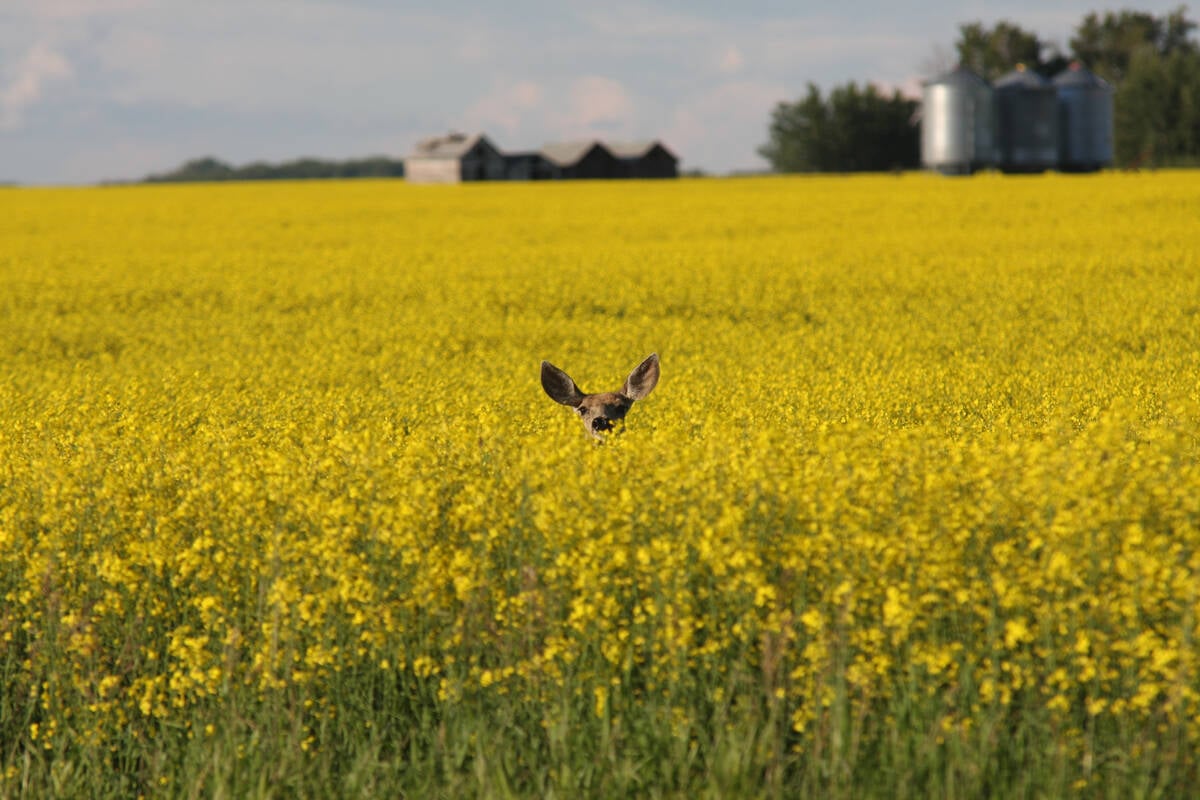
Drones now used to assess wildlife crop damage in Saskatchewan
Wildlife damage in Saskatchewan crops is now assessed by drones and artificial intelligence.
“We’re relatively small scale,” he said at the Saskatchewan Organics field day earlier this summer.
“I probably do a total of 750 acres myself. Of that, some is in cover crops, and maybe four to 500 or 450 are in crop this year.”
Typically, Graner seeds a crop for two years and follows with two to three years of cover crops. However, the field he showed at the field day had been cropped for four years, starting with mustard, then hemp, oats and now black lentils.
The lentils were seeded by the FarmDroid and were also weeded by it.
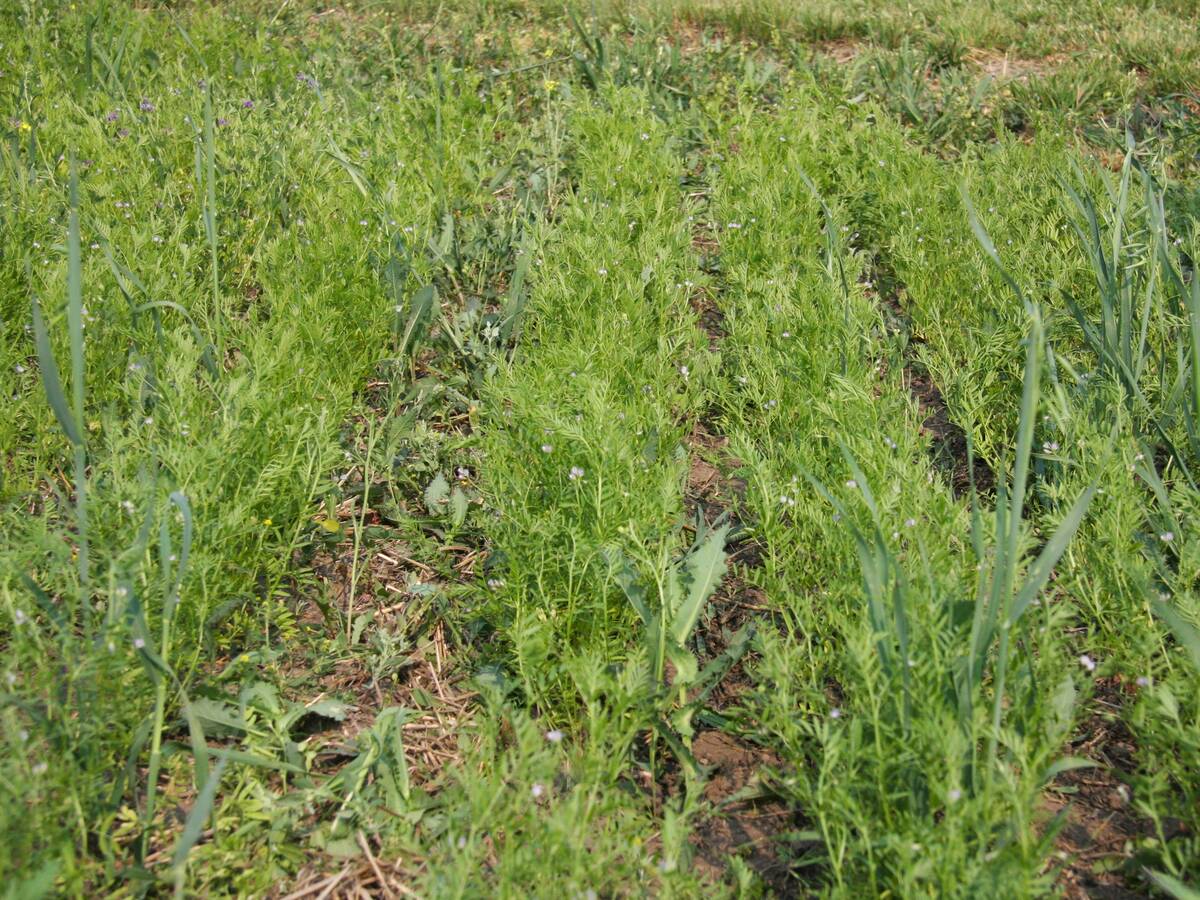
The robot has had its work cut out for it, though. Graner said there’s been plenty of volunteer oats in the crop, as well as alfalfa, which was his cover crop from five years ago.
It works best when weeds are smaller because the machine has arms that act like “knives” to eliminate weeds between the plants. However, if the plants are too large, they can catch on the arms and be pulled out.
The best part of this for organic and horticulture producers is that not only does it get between the rows but between the plants themsleves.
This prevents the weeds from robbing moisture from the crop.
Additionally, the arms only go into the soil about a half inch, so deep rooted weeds aren’t easily eliminated. Because of this, Graner typically pairs it with and interrow cultivator to limit large weeds between the rows.
When it comes to seeding, the machine works pretty smooth. It will seed approximately 1.25 acres per hour — it has a maximum speed of one kilometre per hour — and only stops if it runs out of seed, the battery is low or weather conditions are bad.
“These can have an additional battery pack and run 24 hours a day, seven days a week,” said Mark Weber, FrontLink territory manager and a FarmDroid distributor.
“The solar panels, typically, especially at this time of year, they’ll easily fill up the batteries and keep you running. Most guys, if they’re running two batteries, they’re getting till two, three in the morning. It stops and then, usually within half an hour of the sun being up, it’ll fire itself back up, and away it goes.”
The four seed hoppers each hold six litres. With this capacity, if Graner is seeding mustard, lentils or hemp, he’ll fill it in the morning and once at night.
He’s noticed that with the robot, less seed is being used. After seeding his lentils, he was still left with a partial bag, even though he’d done his calculations correctly.
Weber said that this has been noticed by other producers as well, both small scale and horticultural producers. Because of advanced precision, the FarmDroid is able to ensure greater accuracy, resulting in less seed, he added.
Thus far, there’s been no effect to yields.
Rather, Graner and Weber’s other clients have all said they’ve seen an increase when compared to conventional seeding practices. Between the accuracy of seeding and precision of weeding, there’s an overall better use of both land and moisture.
However, there are problems with the robot when it comes to larger seeds such as oats, peas and wheat. The largest possible seed size, currently, is eight millimetres. Last year, Graner tried to use it to seed wheat but ran into some issues.
“I wanted to seed it just like I’d seeded the lentils in pods of one to three seeds every six inches, roughly, or so,” he said.

“I would have seeded one little pod of seeds, just so I get, for sure, a plant growing. And after a few metres or so, it plugged. The seeds were too big, the valve didn’t open and the robot said, ‘no, not going to do it.’ It sent me a text message and stopped.”
After going back and unplugging it three times, Graner fully opened the seed valve and set it to a two-inch seed placement. While this got the seeding done, it didn’t allow for the robot to go back to weeding between the plants because the rows were no longer even.
Graner has had quite the learning curve with the robot, but he’s figured out the best ways to use the equipment for his operation.
On a smartphone, producers can use the machine’s camera to watch what’s happening, turn it on and off, receive notifications when it stops and are told the reason for stopping.
Once he got the hang of it, Graner said it’s been super easy to program. If a producer know how to set up an auto-steer program, they’ll be able to do this.
It’s also very simple to input “obstacles” such as bush, sloughs or driveways. These can even be added in after the initial programming, such as in cases of heavy rain that leaves standing water.


